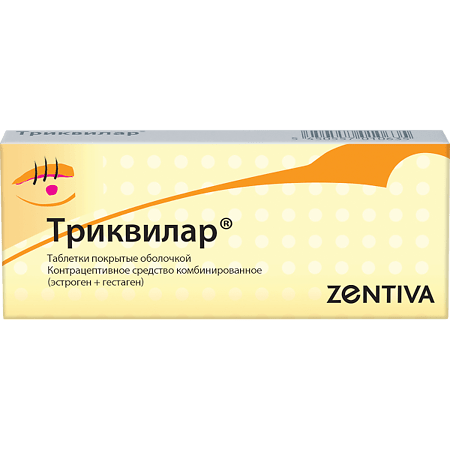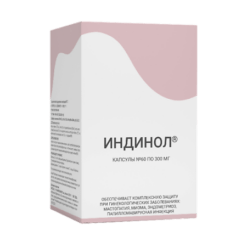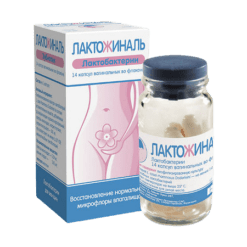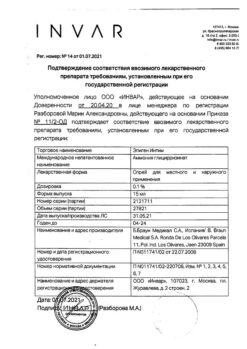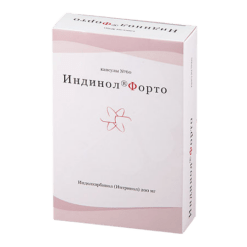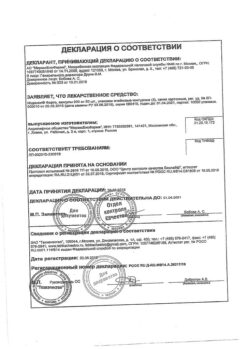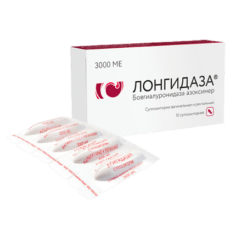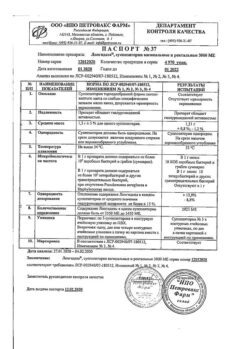No products in the cart.
Tricquilar, 21 pcs.
€1.00
Out of stock
(E-mail when Stock is available)
EAN: 4013742025428
SKU: 25408
Categories: Contraceptive, Gynecology and Obstetrics, Hormonal, Medicine
Description
Triquilar is a low-dose, three-phase oral combined estrogen-gestagen contraceptive.
The contraceptive effect of Triquilar is achieved through three complementary mechanisms:
- inhibiting ovulation at the level of hypothalamic-pituitary regulation;
- changing the properties of the cervical secretion, making it impermeable to sperm;
- changes in the endometrium, which makes implantation of a fertilized egg impossible.
Women taking combined oral contraceptives have a more regular menstrual cycle, less frequent painful menstruation, less heavy bleeding, and as a result the risk of iron deficiency anemia is reduced.
Pharmacokinetics
Levonorgestrel
Intake
Intake
. After oral administration, levonorgestrel is rapidly and completely absorbed, its serum Cmax of 2.3 ng/ml is reached after about 1 hour. After a single oral administration of 0.125 mg of levonorgestrel together with 0.33 mg of ethinylestradiol (corresponding to the highest levonorgestrel content of the triphasic drug), the highest serum concentration of 4.3 ng/ml was determined after approximately one hour. Levonorgestrel is almost completely bioavailable when taken orally.
Distribution
Levonorgestrel is bound by serum albumin and sex hormone-binding globulin (hGBS). Only 1.4% of total serum concentrations are free; whereas 55% are specifically bound to HSPH and about 44% are not specifically bound to albumin. As a result of the induction of binding protein synthesis by ethinylestradiol, the HSPH-bound fraction increases, whereas the albumin-bound fraction decreases. The apparent Vd of levonorgestrel is approximately 128 L after a single oral tablet of Tricquilar containing the highest dose of levonorgestrel.
The equilibrium concentration. The pharmacokinetics of levonorgestrel are influenced by serum hGH levels, which increase about 2-fold over a 21-day course of Triquilar. Daily administration of the drug increases serum levels by about 2-fold, and the equilibrium concentration is reached in the second half of the course. At equilibrium concentration, the volume of distribution and clearance rate are reduced to 52 L and 0.5 ml/min/kg, respectively.
Metabolism
Levonorgestrel is fully metabolized through steroid-specific metabolic pathways. After a single oral dose of the highest dose of levonorgestrel, the serum clearance rate is approximately 1.0 mL/min/kg.
The levonorgestrel serum content undergoes a biphasic decrease. The T1/2 in the terminal phase is about 22 h. Levonorgestrel is not excreted unchanged but only as metabolites, which are excreted with a T1/2 of about 24 h in the urine and bile at a ratio of about 1:1.
Ethinylestradiol
Intake
Ethinylestradiol is quickly and completely absorbed after oral administration. A serum Cmax of approximately 116 pg/mL is reached in 1.3 hours. During absorption and the first passage through the liver, ethinylestradiol is metabolized, resulting in a mean bioavailability of about 45% when ingested, with significant individual differences ranging from 20-65%.
Distribution
Ethinylestradiol is almost completely (98%), although non-specific, bound by albumin. Ethinylestradiol induces the synthesis of HSPC. The apparent Vd of ethinylestradiol is 2.8-8.6 L/kg.
The equilibrium concentration is reached after one week.
Metabolism
Ethinylestradiol undergoes presystemic conjugation both in the small intestinal mucosa and in the liver. The main metabolic pathway is aromatic hydroxylation. The metabolic clearance rate from plasma is 2.3-7 ml/min/kg.
The concentration of ethinylestradiol in blood serum decreases, and the decrease is biphasic; the first phase is characterized by a T1/2 of about 1 h, the second – 10-20 h. It is not excreted from the body unchanged. Metabolites of ethinylestradiol are excreted by the kidneys and liver in a ratio of 4:6; with a T1/2 of about 24 h.
Indications
Indications
Prevention of pregnancy; pain in the middle of the cycle, irregular periods.
Pharmacological effect
Pharmacological effect
Triquilar is a low-dose, three-phase oral combined estrogen-progestogen contraceptive drug.
The contraceptive effect of Triquilar is carried out through three complementary mechanisms:
suppression of ovulation at the level of hypothalamic-pituitary regulation;
changes in the properties of cervical secretion, as a result of which it becomes impermeable to sperm;
changes in the endometrium, which makes implantation of a fertilized egg impossible.
In women taking combined oral contraceptives, the menstrual cycle becomes more regular, painful menstruation is less common, and the intensity of bleeding decreases, resulting in a reduced risk of iron deficiency anemia.
Pharmacokinetics
Levonorgestrel
Suction
After oral administration, levonorgestrel is rapidly and completely absorbed, its serum Cmax of 2.3 ng/ml is achieved after approximately 1 hour. After a single oral dose of 0.125 mg of levonorgestrel along with 0.33 mg of ethinyl estradiol (which corresponds to the highest content of levonorgestrel in a triphasic drug), the highest serum concentration is 4.3 ng/ml, was determined after about an hour. When taken orally, levonorgestrel is almost completely bioavailable.
Distribution
Levonorgestrel binds to serum albumin and sex hormone binding globulin (SHBG). Only 1.4% of the total concentration in the blood serum is found in free form; whereas 55% are specifically associated with SHBG and about 44% are not specifically associated with albumin. As a result of the induction of binding protein synthesis by ethinyl estradiol, the fraction associated with SHBG increases, while the fraction associated with albumin decreases. The apparent Vd of levonorgestrel is approximately 128 L after a single oral dose of Triquilar tablet containing the highest dose of levonorgestrel.
Equilibrium concentration. The pharmacokinetics of levonorgestrel is affected by the level of SHBG in the blood serum, which increases approximately 2-fold during a 21-day course of taking Triquilar. As a result of daily administration of the drug, the level of substances in the serum increases approximately 2 times, and the equilibrium concentration is achieved in the second half of the course. At steady state concentration, the volume of distribution and clearance rate are reduced to 52 l and 0.5 ml/min/kg, respectively.
Metabolism
Levonorgestrel is completely metabolized, passing through the metabolic pathways characteristic of steroids. After a single oral dose of the highest dose of levonorgestrel, the clearance rate from serum is approximately 1.0 ml/min/kg.
Removal
The content of levonorgestrel in the blood serum undergoes a two-phase decrease. T1/2 in the terminal phase is about 22 hours. Levonorgestrel is not excreted in unchanged form, but only in the form of metabolites, which are excreted from T1/2 about 24 hours in urine and bile in a ratio of approximately 1:1.
Ethinyl estradiol
Suction
After oral administration, ethinyl estradiol is absorbed quickly and completely. Serum Cmax of approximately 116 pg/ml is achieved in 1.3 hours. During absorption and first passage through the liver, ethinyl estradiol is metabolized, resulting in its oral bioavailability averaging about 45%, with significant individual differences ranging from 20-65%.
Distribution
Ethinyl estradiol is almost completely (98%), although nonspecifically, bound by albumin. Ethinyl estradiol induces the synthesis of GSPC. The apparent Vd of ethinyl estradiol is 2.8-8.6 l/kg.
Equilibrium concentration is achieved after one week.
Metabolism
Ethinyl estradiol undergoes presystemic conjugation, both in the mucosa of the small intestine and in the liver. The main route of metabolism is aromatic hydroxylation. The rate of metabolic clearance from blood plasma is 2.3-7 ml/min/kg.
Removal
The concentration of ethinyl estradiol in the blood serum decreases, and the decrease is biphasic; the first phase is characterized by T1/2 of about 1 hour, the second – 10-20 hours. It is not excreted unchanged from the body. Ethinyl estradiol metabolites are excreted by the kidneys and liver in a ratio of 4:6; with T1/2 about 24 hours.
Special instructions
Special instructions
If you miss taking Triquilar for more than 12 hours, you must take the next pill as quickly as possible and use additional methods of contraception until the end of the cycle. The effectiveness of the drug decreases with simultaneous use of drugs that activate the enzyme function of the liver, vomiting, and diarrhea. Triquilar should be discontinued during prolonged immobilization and 6 weeks before planned surgery.
It is not recommended to prescribe Triquilar to smoking women over 35 years of age. For women under 18 and over 35-40 years of age, three-phase low-dose medications are recommended.
For therapeutic and prophylactic purposes, it is advisable to use monophasic drugs. The frequency and severity of side effects depends on the doses and ratios of the active substances included in each drug.
Active ingredient
Active ingredient
Ethinyl estradiol, Levonorgestrel
Composition
Composition
Active ingredients:
levonorgestrel,
ethinyl estradiol;
Excipients:
calcium carbonate,
iron oxide pigment red,
iron oxide pigment yellow,
glycerol 85%,
lactose monohydrate,
magnesium stearate,
corn starch,
Montanglicol wax,
macrogol 6000,
povidone 25,000,
povidone 700,000,
sucrose,
talc,
titanium dioxide
Contraindications
Contraindications
hepatitis, cholecystitis
diabetes mellitus
arterial hypertension
anemia
chronic colitis
tumors of the mammary glands and genital organs
intolerance to the drug.
Side Effects
Side Effects
Soreness and tension of the mammary glands, enlargement of the mammary glands, discharge from the mammary glands; spotting and breakthrough uterine bleeding; headache; migraine; change in libido; decreased/changes in mood; poor tolerance to contact lenses; visual impairment; nausea; vomit; stomach ache; changes in vaginal secretion; skin rash; erythema nodosum; erythema multiforme; generalized itching; cholestatic jaundice; fluid retention; change in body weight; allergic reactions.
Rarely – increased fatigue, diarrhea.
Chloasma can sometimes develop, especially in women with a history of pregnancy chloasma.
As with other combined oral contraceptives, in rare cases the development of thrombosis and thromboembolism is possible.
Interaction
Interaction
Some medicines may reduce the effectiveness of Triquilar.
These include drugs used to treat epilepsy (eg, primidone, phenytoin, barbiturates, carbamazepine, oxcarbazepine, topiramate, felbamate), tuberculosis (eg, rifampicin, rifabutin), and HIV infection (ritonavir); antibiotics for the treatment of certain other infectious diseases (for example, ampicillin, tetracyclines, griseofulvin), as well as medicines based on St. John’s wort (used mainly in the treatment of depressive conditions).
Sulfonamides and pyrazolone derivatives can enhance the metabolism of the steroid hormones included in the drug.
Overdose
Overdose
Symptoms that may occur in case of overdose: nausea, vomiting, bleeding from the genital tract.
In case of overdose, consult a doctor.
Storage conditions
Storage conditions
Store at a temperature not exceeding 25°C, out of the reach of children.
Shelf life
Shelf life
5 years.
Manufacturer
Manufacturer
Bayer Weimar GmbH & Co. KG, Germany
Additional information
| Shelf life | 5 years. |
|---|---|
| Conditions of storage | Store at a temperature not exceeding 25 ° C, in a place out of the reach of children. |
| Manufacturer | Bayer Weimar GmbH & Co. KG, Germany |
| Medication form | pills |
| Brand | Bayer Weimar GmbH & Co. KG |
Related products
Gynecology and Obstetrics
Buy Tricquilar, 21 pcs. with delivery to USA, UK, Europe and over 120 other countries.

